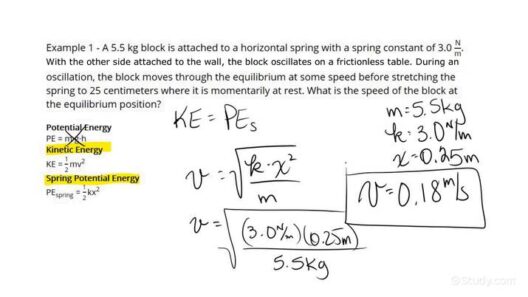In the modern era, the consumption of energy in households is a significant contributor to environmental degradation. With climate change posing an imminent threat, conserving energy at home is not merely a suggestion but an imperative. Implementing practical steps to save energy can lead to not only reduced utility bills but also a profound impact on our planet’s health. Below are comprehensive strategies that can be effortlessly woven into the fabric of daily life, equipping everyone with the means to make a tangible difference.
1. Optimize Heating and Cooling Systems
A substantial portion of residential energy consumption is attributed to heating and cooling. One effective strategy involves the calibration of your thermostat. During winter months, lowering the thermostat by just one degree can lead to a noteworthy reduction in energy usage, while in the summer, raising it can have a similar effect. It is advisable to invest in a programmable or smart thermostat that learns your schedule and adjusts temperatures accordingly. This smart technology eliminates the wastage of energy when you’re away from home.
Furthermore, regular maintenance of HVAC systems ensures efficiency. Changing filters every month or as per manufacturer guidelines keeps systems operating optimally. Additionally, sealing ductwork can prevent the loss of heated or cooled air, thus maintaining a comfortable indoor atmosphere without excessive energy expenditure.
2. Embrace Energy-Efficient Appliances
Transitioning to energy-efficient appliances is a monumental step towards conservation. Appliances bearing the ENERGY STAR label meet stringent efficiency guidelines and utilize an estimated 10-50% less energy than standard models. Replacing outdated appliances, such as refrigerators, washing machines, and dishwashers with energy-efficient alternatives can dramatically reduce electricity consumption.
Furthermore, when operating these appliances, one should always maximize their use. For instance, doing full loads of laundry or dishes is more energy-efficient than smaller, frequent cycles. Employing air-dry settings on dishwashers and avoiding the dryer in favor of line-drying can also contribute to significant energy savings.
3. Enhance Home Insulation
Insulation plays a pivotal role in maintaining a consistent indoor climate. Poorly insulated homes lead to unnecessary heating and cooling, thereby inflating energy bills. Evaluating your home’s insulation, particularly in attics, walls, and basements, can uncover areas in need of improvement. Adding insulation reduces the need for artificial heating and cooling, promoting a sustainable living environment.
Moreover, addressing drafts by caulking windows and doors can seal off unwanted air leaks. Utilizing weatherstripping, particularly around operable windows and doors, further enhances insulation. These minor investments reap substantial long-term benefits, both financially and ecologically.
4. Smart Lighting Solutions
Lighting is another area where energy conservation can be readily accomplished. Replacing incandescent bulbs with LED alternatives yields remarkable energy savings, as LEDs consume up to 80% less energy and have a significantly longer lifespan. Consider employing motion sensor lighting in less-trafficked areas of your home, such as hallways or garages, to further minimize energy consumption when spaces are unoccupied.
Additionally, harnessing natural light can reduce reliance on artificial sources. Strategically placing mirrors and choosing lighter paint colors can help effectively distribute daylight throughout your home, making spaces feel more open and illuminated without the need for electric lighting.
5. Harness Renewable Energy
Adopting renewable energy sources can greatly augment energy conservation efforts. Solar panels, for example, can be a worthwhile investment depending on your geographic location and financial capacity. Once installed, solar panels harness sunlight to generate electricity and can lead to substantial long-term savings. Furthermore, tax incentives may be available to subsidize the initial costs, making this option more accessible to many households.
For those unable to invest in solar technology, consider alternatives such as solar water heaters or solar cookers. These devices use solar energy to heat water and prepare food, significantly decreasing fossil fuel dependency and electricity consumption.
6. Reduce Water Heating Expenses
The thermal mass requirement for heating water can lead to exorbitant energy bills without mindful management. Lowering the thermostat on water heaters to 120 degrees Fahrenheit prevents scalding and saves energy. Furthermore, insulating the pipes and the heater itself can reduce standby heat loss, ensuring energy efficiency.
When laundering clothes, opting for cold water cycles not only conserves energy but also preserves fabric integrity. Penned beneath the incandescent glow of modern laundry, energy-saving practices in water usage can substantially mitigate your household’s carbon footprint.
7. Cultivate Energy-Conscious Habits
Beyond physical changes, cultivating a mindset oriented towards energy conservation represents a powerful tool for reducing consumption. Simple acts like turning off lights when exiting a room, unplugging electronics when not in use, and minimizing the use of space heaters can contribute to energy efficiency. Additionally, fostering awareness within family members about energy conservation efforts promotes a collective approach to sustainability.
In conclusion, the journey toward energy conservation begins at home, where individual actions cultivate a broader environmental impact. From enhancing heating and cooling systems to embracing renewable energy sources, every step counts. By implementing these practical strategies, everyone can contribute to a sustainable future, reducing greenhouse gas emissions and fostering a healthier planet for generations to come. The responsibility lies within each of us to adopt a mantra of sustainability and convey it through our daily habits. Let us step forward and evolve our homes into models of efficiency and ecological responsibility.






